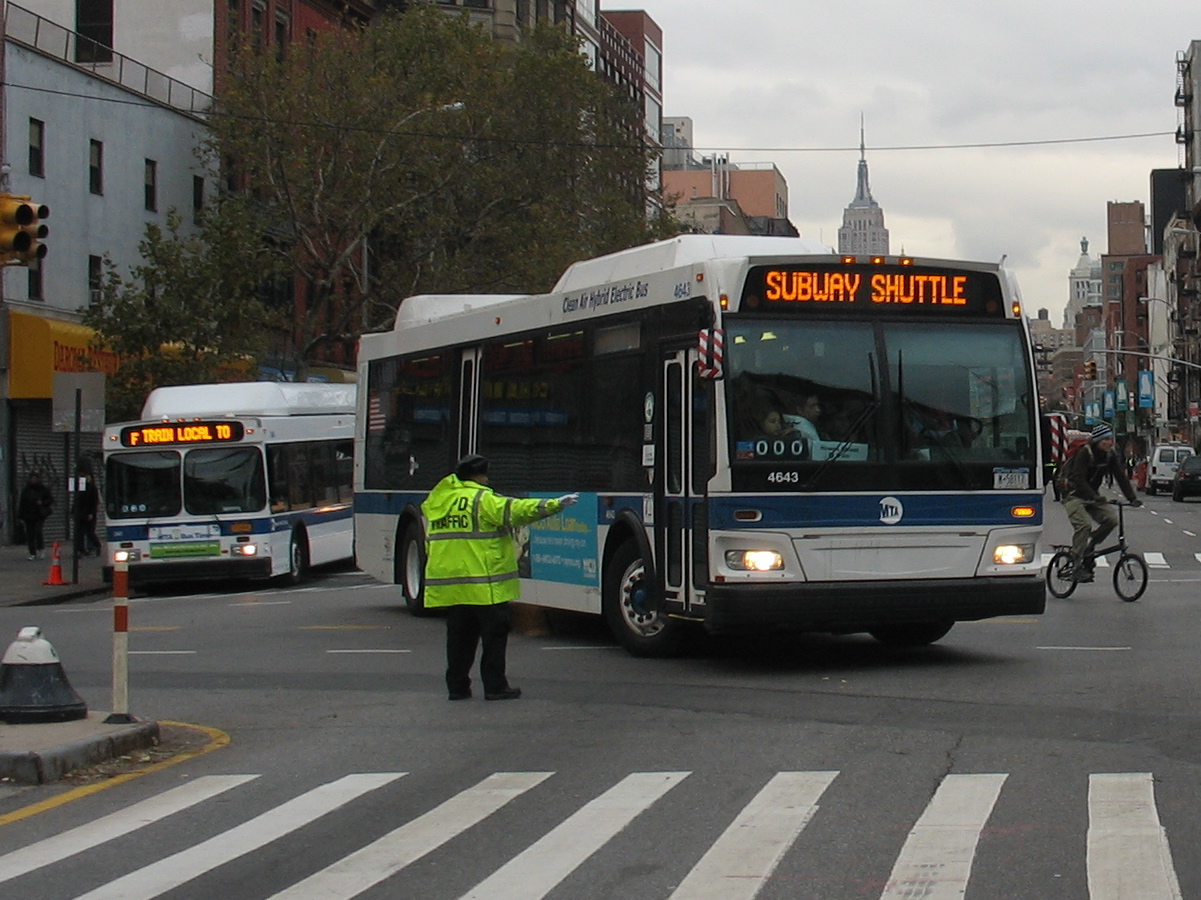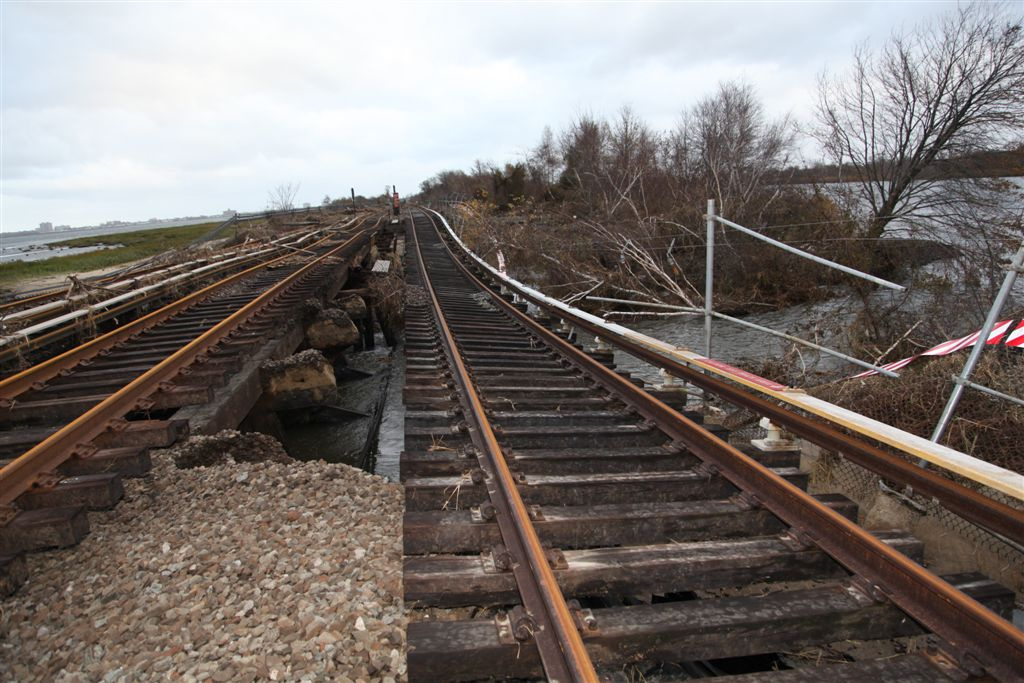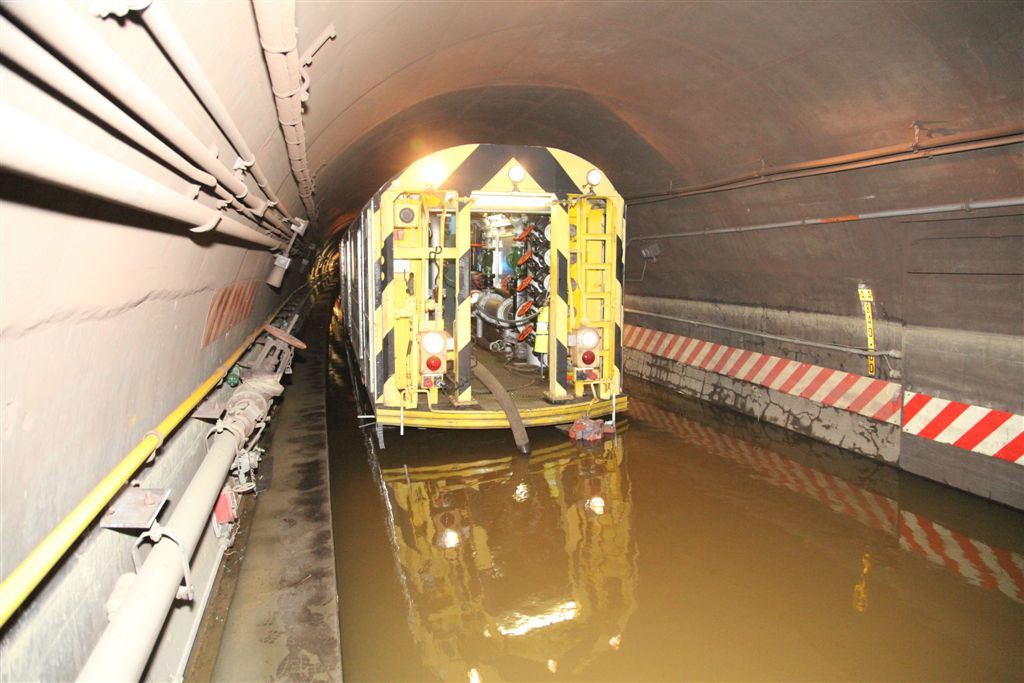The introduction of articulated buses was a great technological advancement in the world of passenger transportation. Replacing a typical 40-foot transit bus with a 60-foot bus allows you to carry a lot more people without any additional operating costs. There are many benefits to having them in your fleet.
Longer buses can be a great solution for cities looking to add capacity to busy routes. Only 3 articulated buses are needed to replace 4 standard buses, so the reduced operating cost outweighs the extra capital cost. Bunching can be reduced since you don't have as many vehicles on a route. The turning radius of an articulated bus is actually shorter than that of a standard bus -- because of how its length is divided: 35 feet plus 25 feet -- so the route does not need to be changed. And since articulated buses are well suited to high volume routes, they can come in handy during planned rail outages, if you can plan the shuttle for a time of reduced demand on the normal bus route (try Sunday).
However, there are drawbacks to consider, as well as things that need to be addressed before and during implementation.
Target deployment of higher capacity vehicles. Articulated buses should first be deployed on your most frequent routes, the places where service is already so frequent that adding 40-foot buses only worsens bunching (generally every 5 minutes or better). Fewer vehicles means more balanced capacity and hopefully a reduction in bunching and long gaps in service.
Don't mix different bus sizes. Only add articulated buses if you can convert a whole route. If two or more routes run together for a long segment, convert all of them. Otherwise you get major bunching as a 40-foot bus takes longer to load and a 60-foot bus catches up to it. You might try to be creative by scheduling a longer headway in front of the longer buses, but we all know how well buses stick to their schedule all the time. Just don't mix 'em.
Lengthen bus stops. Bus stops will need to be lengthened by 20 to 40 feet. Often the new stop becomes inaccessible for disabled passengers or blocks a cross street or pedestrian crossing. Rebuilding sidewalks is very expensive and, if the transit agency does not manage the streets, very difficult. Even if these issues don't come up, abutters are likely to raise hell about the removal of a few parking spots.
Consolidate stops. These are busy, frequent routes. People will walk farther to a fast, frequent service, so while you're lengthening stops, take advantage of this rare opportunity to reduce travel time. If you don't have limited-stop service, converting a few routes to 60-foot buses may free up the resources to try limited-stop service on one route.
Make a snow plan. Many transit agencies experience problems with articulated buses fishtailing in the snow, so much that they usually need to be removed for safety reasons. If you suddenly need to pull many buses off the road, how quickly can you do it, and where are you getting the extra 40-foot buses during a storm when you need every vehicle on the road? The best solution may be to create and heavily publicize a plan for reducing service on specific routes during a storm, so you can make extra buses available. (There are many other good reasons for a snow service reduction plan, but mostly it's about safety and the ability to shift buses around.)
Add more doors. These are busy routes, so you can greatly reduce dwell times by having 3 or 4 doors per bus. This is why articulated buses beat double decker buses, so don't make New York City Transit's initial mistake of buying articulated buses with only two doors. And as with all buses, increase passenger movement within the bus by choosing fewer seats in favor of more standing room.
Implement off-board fare payment. Add to the savings by taking advantage of this golden opportunity to speed up your service. The extra doors allow an even greater reduction in time spent at the stop -- and make it even more ridiculous to wait in line at the front door.





 Bus stops are only blocked when a driver thinks s/he is more important than anyone else. These people deserve much worse than a parking ticket. Perhaps
Bus stops are only blocked when a driver thinks s/he is more important than anyone else. These people deserve much worse than a parking ticket. Perhaps